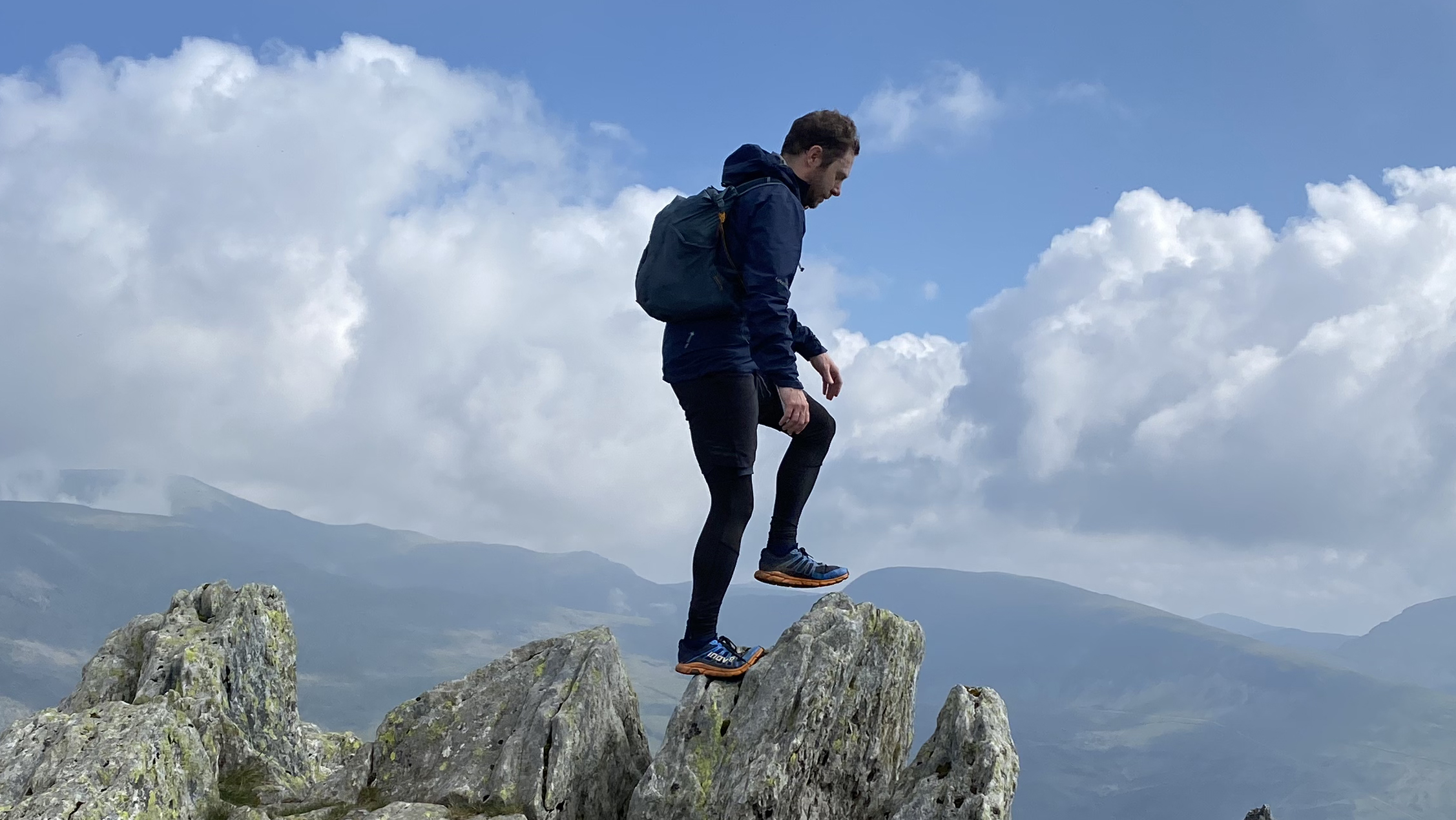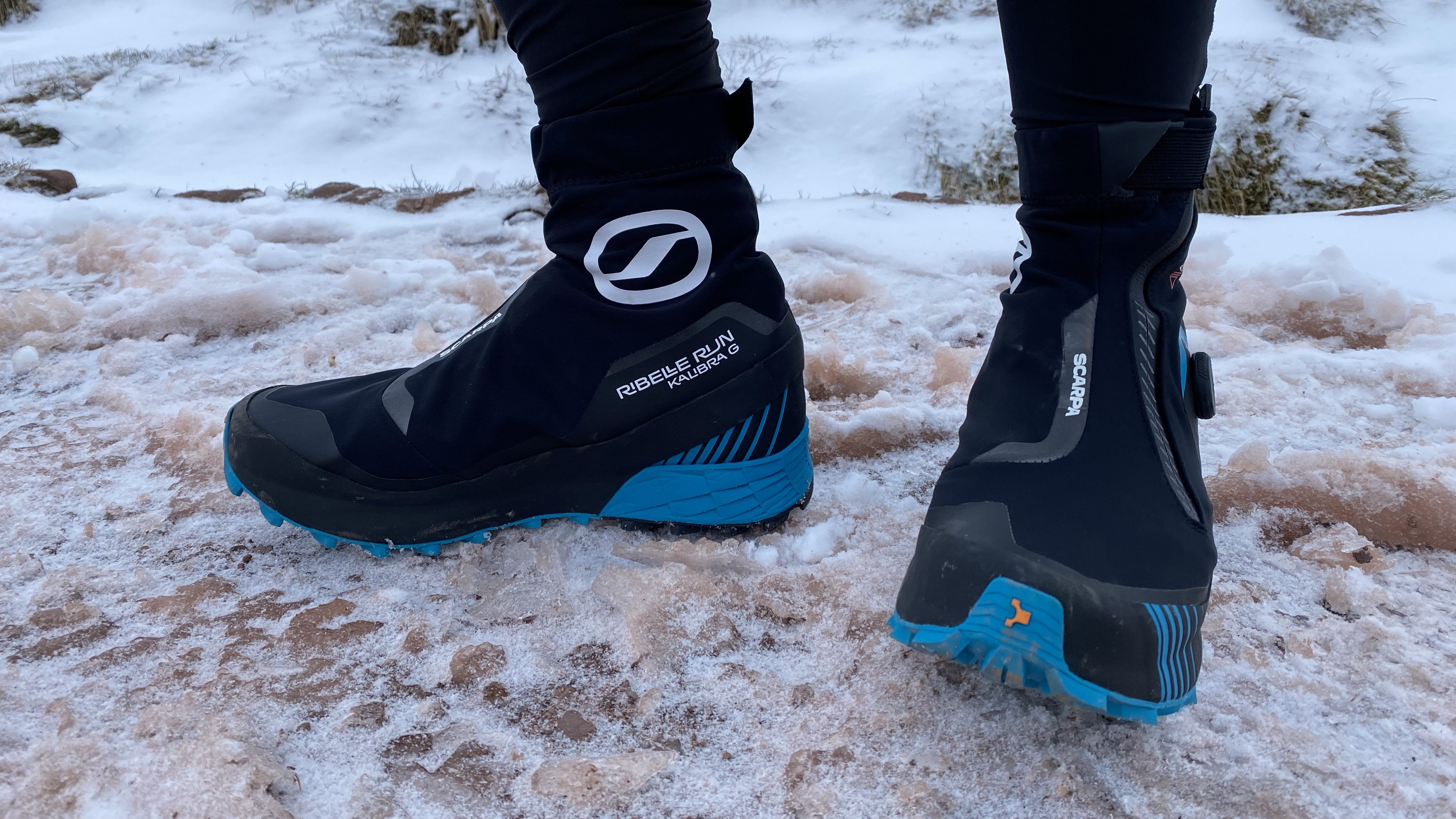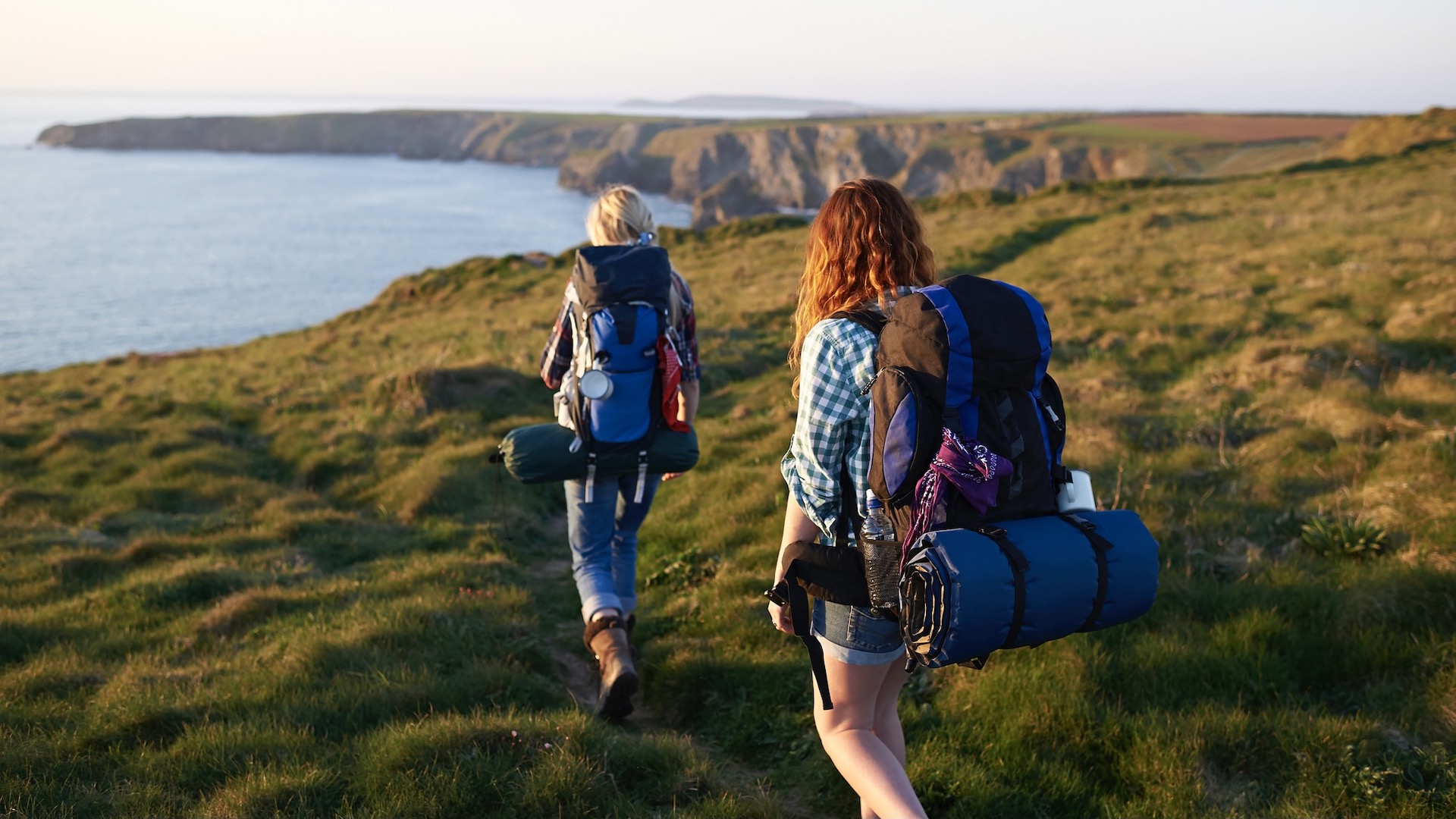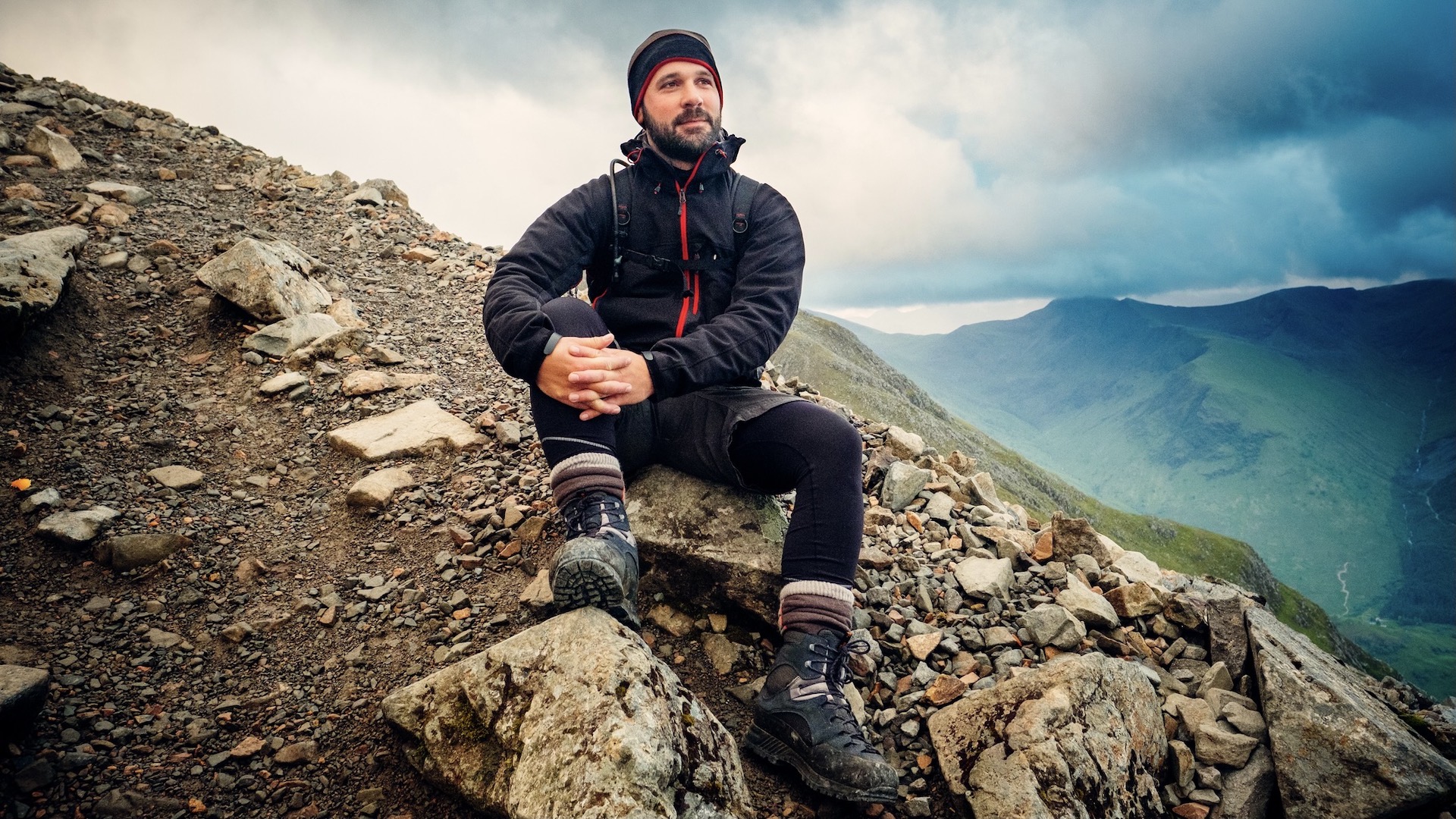Are trail running shoes good for hiking? Our experts provide their views
Wouldn’t it be awesome if your favorite trail running shoes could double up as hiking shoes, too? Let's find out if they can...

Are trail running shoes good for hiking? Well, you'd think so, wouldn't you? After all, they're designed for trails – the clue is in the name! But, are they really as suitable as the finest hiking shoes and hiking boots on the market in 2026? If so, when is a trail running shoe the best option and when should you swap them out for their beefier booty brethren?
We're here to answer all the above and more. Our experts are lovers of both hiking and trail running and don't necessarily see the two as being completely separate. So, let's lace up and get into it. Are trail running shoes good for hiking?
Are trail running shoes good for hiking?
I didn't invest in hiking boots for many years, doing all of my hiking in consecutive pairs of Salomon Speedcrosses. I've taken on hundreds of scrambles in them and summited many peaks without any injuries or complaints.
Alex Foxfield, Mountain Leader
Yes, trail running shoes are good for hiking, particularly during the summer months. They're less suitable in more challenging conditions, on hard scrambling terrain or when carrying a heavy pack.
They're best used for summer day hikes, when you're unlikely to be carrying a heavy load. We think it can be quite liberating to move fast and light through the mountains in a pair of trail running shoes, particularly if you're used to hiking boots. And, we've found that they're also suitable for easier scrambling. This all makes total sense, as trail running shoes are designed for trails, so it should come as no surprise that they're adept as hikers.
It’s also worth noting that there is a huge range of styles when it comes to the best trail running shoes and some will be better than others in different scenarios.
However, in general, there are caveats. Let's get into them...

We wouldn't recommend wearing trail running shoes when backpacking, particularly if you're hauling all your weighty camping gear. They don't provide the level of support and stability seen in the best hiking boots. They're also not ideally suited to wintry or wet conditions, as they're usually not waterproof or insulated. You don't want to end up with cold, wet feet. There are exceptions, like La Sportiva's Cyklon Cross GTX or Scarpa's Ribelle Run Kalibra G, but generally, trail running shoes are better for summer hiking adventures.
All the latest inspiration, tips and guides to help you plan your next Advnture!
We've mentioned that trail shoes can take on the occasional easy scramble. However, once the grades start getting harder and you start using rock climbing techniques like smearing and edging, the amount of flex in the sole of a trail shoe doesn't provide as much grip and confidence as in a hiking boot or, better still, an approach shoe.
See the table below for a quick comparison between trail shoes and hiking boots. For a more detailed consideration of a trail shoe's suitability when dealing with factors like terrain, support, protection, comfort and durability, scroll further down.
| Situation | Trail running shoes | Hiking boots |
| Summer hiking | For summer day hikes on well-maintained trails, trail running shoes are great. They're lighter than standard hiking footwear, provide a decent level of protection and allow you to move faster. | Hiking boots provide the most protection but may be overkill for more casual summer hikes. Their insulation may make them too warm, while their weight may be unnecessary. |
| Summer scrambling | Trail running shoes are suitable for easy scrambling but their outsoles aren't as rigid or as grippy as technical boots or approach shoes, so don't provide loads of confidence on trickier terrain. | Protective and often boasting a fairly rigid sole, hiking boots are a good choice for scrambling. However, again their insulation and weight may make them less comfortable. |
| Wet conditions | Grip wise, a pair of trail running shoes with aggressive 4-6mm lugs will hold on wet terrain. However, they're unlikely to be waterproof and you'll end up with wet feet. Not great if you're out for several hours. | Their waterproof protection, stability and grip makes hiking boots a good option for wet weather hiking. |
| Winter hiking | Most trail running shoes don't provide the insulation nor the protection needed for wintry adventures. Once you move into mountaineering territory, they are unsuitable. | Hiking boots are ideal for winter hiking thanks to their warmth and protection. For mountaineering purposes, crampon-compatible winter boots are a must. |
| Backpacking | When carrying a heavier load on a multi-day backpacking trip, trail running shoes won't provide the support your feet will need. | The level of ankle support and stability of a hiking boot makes it the go-to for long backpacking missions with a heavy pack. |
Meet the experts

Fiona loves both the pursuit of trail running and days spent hiking in the mountains. Based in Scotland, she often heads for the Munros, sometimes in her hiking boots, other times with a hydration pack and trail running shoes, and usually with her dog.

Alex enjoys a fast and light approach to his mountain exploits. For years, he did all his hiking in a pair of Salomon Speedcross trail running shoes, only buying his first pair of boots because he needed something that could take crampons. These days, he takes a more balanced approach and is well aware of the pros and cons of wearing trail shoes in the mountains.
Today's best deals
Terrain and stability
- Hiking footwear tends to have a wider, stiffer sole for increased stability
- Trail running shoes feel more nimble a responsive to the terrain

While trail running shoes are designed to give traction and stability, when hiking you will move in a different way and most likely carry a hiking backpack, too. Walking shoes and boots tend to have a wider and thicker sole to provide a stable base for every footfall.
Traction will also be different when you compare trail running shoes to hiking shoes. When you run, your foot lands and rolls in a different way to when you walk. Runners will take shorter and lighter steps, too, as they move faster.
It might seem obvious, but the designers of running and hiking shoes will consider footfall and speed when creating shoes for specific activities and this can often be seen in the sole of the shoe. The sole of a hiking boot is usually wide, stiffer and more durable. Subsequently, it is usually heavier.
This is not to say that a walk in your favourite trail running footwear won’t be a success. Because the sole is narrower and thinner, you will feel more nimble and closer to the ground, and as a result, there is a decreased risk of tripping on uneven terrain.
But if you are hiking a longer distance, carrying a heavy pack and on rougher terrain, you might end up requiring footwear that offers more stability and less chance of you going over on an ankle.
Support
- Hiking footwear, especially boots, provide more ankle support

Trail running shoes are designed to be lightweight and easy to wear while running. Some will offer greater foot support than others, but if you compare a trail running shoe to a hiking shoe or boot, you’ll notice that the upper gives lower levels of support.
Hiking footwear is designed to give higher levels of support for the foot over longer distances and it is likely to be a more robust and heavier design. A walking boot will support the ankle much more than a trail running shoe or walking shoe.
Protection
- Hiking boots feature much more protective uppers and soles
- This helps to protect against rock abrasion, vegetation and sharp rocks underfoot
- Trail running shoes usually have a breathable upper that’s not overly protective
Because hiking shoes and boots are usually manufactured from thicker materials and generally have a tougher sole, they also offer greater protection from the terrain. The style of a hiking shoe or boot is also to give a larger coverage of the foot and ankle.
This means that the foot is more protected from vegetation, stones, roots etc. If you are going to be hiking in rough terrain, such as rocky mountains, muddy hills or rough forest trails, hiking footwear is likely to provide better protection.
Look at the materials on a trail running shoes' upper. They're usually a lightweight fabric, while hiking shoes and boots are made with heavier and more robust materials, including leather.
It really does depend what the terrain will be like because if you plan to walk on the type of trails that you usually run on, then your favourite running footwear will suffice.
Comfort levels
- In general, hiking footwear isn’t as flexible as trail running footwear
- A lightweight summer hiking shoe is very comfy for warm season day hikes
- Rigid winter boots aren’t as comfortable but they’re essential for adventures above the snow line
- After a long day on technical terrain, hiking boots end up being more comfortable than trail running shoes

The chances are your trail running shoes will feel more comfortable than a walking shoe or boot initially. But is that because you wear your running shoes more frequently and so they seem more comfy?
Many styles of walking shoe and boot these days can be very comfortable. There are plenty of choices and you will discover hiking shoes and boots that look a lot like running trainers.
Again, it depends on where you will be hiking and for how long. A lightweight summer hiking boot or shoe, which looks a bit like an enhanced running trainer, will be ideal for some lower level trails and hills in summer and will be perfectly comfortable. However, at the other end of the spectrum are winter boots, which are very rigid, designed for the rigors of winter mountaineering. Boots often take a bit of "wearing in" to get used to. It shouldn’t take long for you to do this, thanks to modern materials, and if you find they rub or they are too stiff or uncomfortable, the chances are they are not the right footwear or fit for you anyway.
In general, hiking boots are a lot stiffer and made from more durable and thicker materials so they might not feel as comfortable and flexible as a trail running shoe. As mentioned, boots are designed to protect the foot against technical, mountainous terrain.
However, after a long day on this kind of ground, a comparison between a boot and a trail shoe finds that a boot is often more comfortable by the end. This is because your foot is much more exposed to scrapes, impacts and the weather in a trail running shoe, which tends to get less and less comfortable on a long, technical adventure.
Seasonal changes
- Hiking footwear is better in the colder months
- Hikers are usually waterproof whereas trail running shoes usually aren’t
- Winter boots are essential for winter walks and mountaineering
- Some winter trail running shoes feature integrated gaiters and waterproofing
- Hiking footwear will keep your feet warmer too
Trail running footwear might well be fine for summer hiking because you're less likely to end up with wet feet. In addition, the lightweight design of running footwear allows your foot to breathe more easily when it’s a hot and sunny day.
But other seasons bring a greater chance of wet weather. In winter, there will be snow and ice to deal with while hiking, which is when winter boots are essential. Heading into mountaineering territory with trail running shoes is asking for trouble.
Some running shoes have Gore-Tex waterproof linings, but there is a greater chance of hiking shoes and boots keeping your feet dry because they are made from more robust materials. There are vey few hiking shoes and boots that are not waterproof – and you can also check out our guide to waterproofing hiking boots.
Another advantage of hiking boots in the wetter months is their higher cut, which stops water from getting in over the top. However, there are some winter trail running shoes, that feature an integrated gaiter, as well as Gore-Tex waterproofing. This makes them just as water-tight as some of the best hiking boots.
The thicker and heavier hiking footwear will keep your feet warmer, too, and protect against the cold, as well as wet and muddy ground.
Weighty matters
- Lighter trail shoes should allow you to move more efficiently
- The heavier boot provides more support
There is the weight of the shoe and also your own body weight to consider. Trail running shoes are likely to be lighter compared to hiking footwear. This can be an advantage in terms of comfort and energy use when walking in trails.
People who are a bit heavier themselves will probably be better off in a heavier walking shoe or boot because it will give greater foot and ankle support and durability when walking longer distances. This is especially true if you will be carrying hiking pack.
Durability
- Hiking footwear is designed to be durable
- Trails shoes put weight and breathability ahead of durability
- Thinking trail shoes are a cheaper option may be false economy

The downside, certainly from an environmental point of view, is that my Speedcross trail running shoes weren't as durable as boots would have been and I got through three of four pairs over a six year period. I'll always remember the long descent of Mt Fuji absolutely destroying the lugs on my trail shoes.
Alex Foxfield, Mountain Leader
Hiking footwear is designed to be as durable as possible, often featuring tough materials in the upper, such as leather, and hard-wearing Vibram rubber in the outsole. You can expect a quality pair of hiking boots to last you for several years.
On the other hand, trail running shoes are designed to be lightweight and breathable, with less attention paid to durability. The upper of the trail shoe is likely to degrade much quicker than in a pair of hiking shoes. As well as this, the rubber used in the sole of a trail shoe is usually softer and wears away much faster.
So, while it may seem like trail running shoes are a cheaper option than buying premium hiking boots, the opposite may be true. Three pairs of running shoes can cost more than one pair of hard-wearing hikers.
Verdict
There is a lot to consider when choosing between trail running shoes or hiking shoes or boots for a walk. In summer, depending on the kind of terrain you're taking on and how much you're carrying, trail shoes will probably be the more comfortable option and will allow you to take on the trails at speed. So, for day hikes in summer, there's nothing wrong with wearing trail running shoes.
However, when carrying a heavier load, the stability and ankle protection provided by hiking boots is hard to beat. Also colder, wetter adventures call for footwear that's better insulated and gives greater weather resistance. In these cases, hiking boots are the winner.

Fiona Russell is a widely published adventure journalist and blogger, better known as Fiona Outdoors. She is based in Scotland and is an all-round outdoors enthusiast with favorite activities including trail running, mountain walking, mountain biking, road cycling, triathlon and skiing (both downhill and backcountry). Aside from her own adventures, Fiona's biggest aim is to inspire others to enjoy getting outside and exploring, especially through her writing. She is also rarely seen without a running skort! Find out more at Fiona Outdoors.
